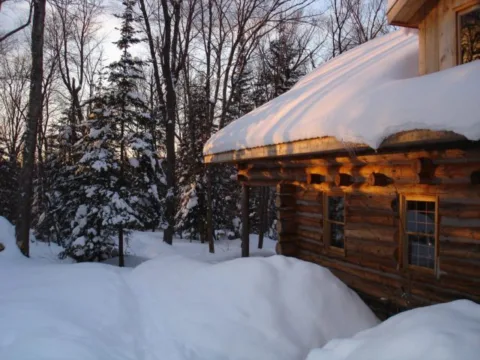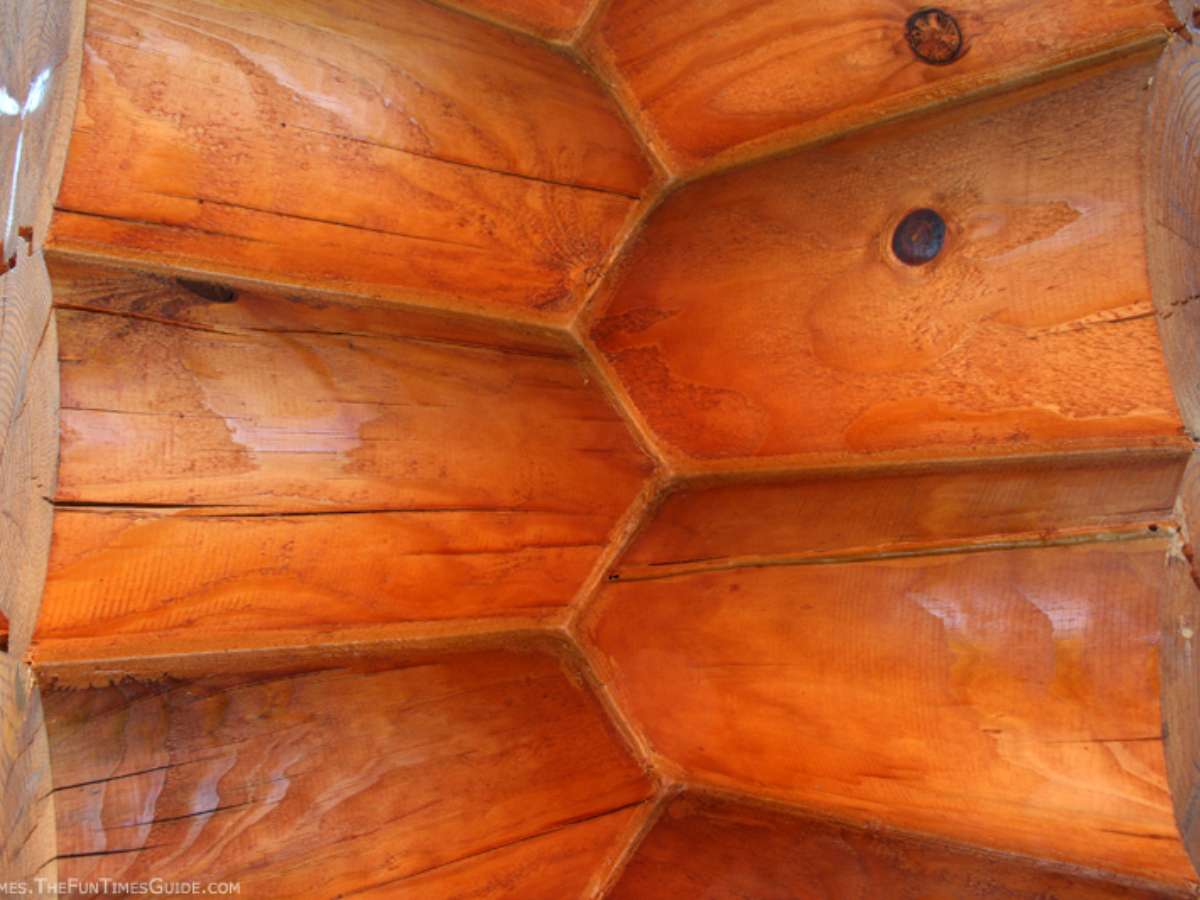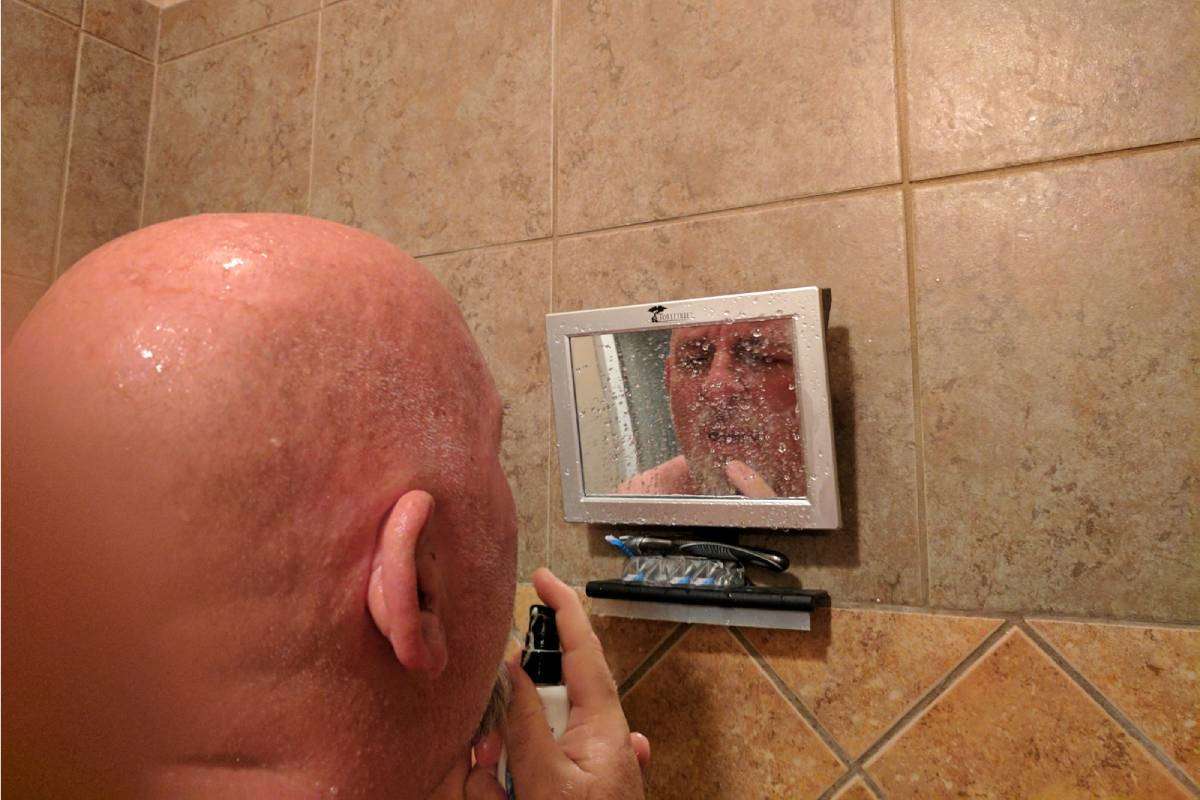So, do you really have to remove snow from the roof of your log home?
Do some roofs fare better with the snow than others? (For example: metal roofs vs shingle roofs.)
You may think those icicles hanging from your roof are pretty but they are actually a symptom of a potentially damaging problem for your home. As snow melts from you roof either by the sun or heat escaping from the home it tends to refreeze at the edges and other juncture points of your roof. The refreezing of water has a damming effect creating an even bigger ice dam behind it. Continuous feeding of the ice dam by melting and refreezing snow melt can cause significant damage to the roof and well as interior of the home. Source
Following are a few things to think about when it comes to removing snow from the roof of your log cabin or home…
Do You Really Have To Remove Snow From A Roof?
The 4 things that have the most to do with whether you should remove snow from your roof or not are:
- The amount of snow that falls consistently in your area. If a large amount of snow only falls once or twice a year in your area, there’s no need to remove it. But if you live in an area that repeatedly gets hit with a lot of snow, then you should probably have a plan for removing it.
- The pitch of your roof. The flatter the roof, the more it retains the snow moisture and, therefore, the more likely you should be removing the snow from it. The steeper the pitch of your roof, the more likely the snow will fall off itself. (See how the pitch of your log home roof affects snow load and construction costs.)
- If warmer weather temporarily moves in, it could begin to thaw that huge load of snow on your roof before it refeezes again. The end result could be a huge amount of added weight (from the ice) on your roof.
- If your house is older. The older your home is, the more you will need to remove snow from your roof. Once ice starts building up the edge of your roof, the heavy snow behind it can cause your roof to start leaking.
Structures constructed with building permits are designed for 40 lbs/sq ft minimum roof snow load. Older roofs may be of concern and may not meet this minimum roof snow load. Source
The rule of thumb is you should remove snow if there are more than 4 feet of dry snow or more than 2 feet of heavy, wet snow and ice on the roof. Here’s how to determine if you really need to remove the snow from your roof or not. (It’s a classic formula based on weight of snow + depth of snow.)
As the water seeps under shingles it refreezes expanding and creating an even bigger gap for future drainage to fill and further the cycle. This in the very least is raising your shingles. As the cycle continues the water will look for and create cracks in the wood and walls each time expanding to create more damage ‘til you see leakage and cracks in the ceiling and walls of the home. Source
How To Remove Snow From The Roof Of Your Home
There are a handful of different methods to shovel the snow off your roof. However, if you do it wrong, you could slide off the edge and fall.
Not to mention the fact that you could also damage your roof. Cold temperatures make roof shingles brittle, so they break more easily. Furthermore, if you remove many of the little pebbles from the surface of the shingles, you will shorten the life of your roof.
For the record, a metal roof tends to shed water, snow and ice better than a roof with asphalt shingles.
The most popular option is to use a snow rake. You can buy a roof rake, or make your own snow removal tool.
The safest way to clean snow from your roof is with a snow rake-a long-pole with a flat piece of aluminum attached to the end. A snow rake is ideal for hooking snow and pulling it from the roof. You can build your own by welding a long pole-shaft to a flat piece of aluminum at a ninety degree angle, but for the less adept person, one can be bought on-line or at a local hardware store. Source
It’s important to note that some snow rakes have rollers that keep the roof rake just above the shingle. If you’re using a regular shovel as a roof rake, be careful to not impact the shingles themselves.
Another popular way to remove snow from a flat roof is to use a snow blower.
If you choose to pay a professional to remove the snow from your roof. It costs about $50 per hour. A complete snow removal job typically ranges between $160 and $240.
Even if a snowy roof does not cave-in, snow can still melt, creating a vexing situation. Sunny skies and heat from your home can warm snow on your roof, causing ice damming, sliding, and falling snow. These things lead to water intrusion, which will damage the interior of your home if gone unchecked. When snow melts, water often trickles through cracks in your roof. Water damage can cause ceilings, infrastructure, and roofs to warp or rot. The ugly brown stains throughout your home are a tell-tale sign of water damage, and an immediate signal that you must remove snow from your roof. Source
More About Roof Snow Removal
- Log Home Roof Trusses For Serious Snow Loads
- Homeowners’ Thoughts On Removing Snow From A Roof
- New Gadgets For Snow & Ice Removal
- Log Home Roofing And Heating Q & A
- Consider Roof Design & Snow Load When Assessing Risk
- Log Home Roofs, Snow, & Maintenance Issues
- How to Remove Snow from Your House Roof
- What You Need To Know About Log Home Dormer Designs
- Tips For Removing Snow From Solar Panels
- Log Home Winter Maintenance Issues





